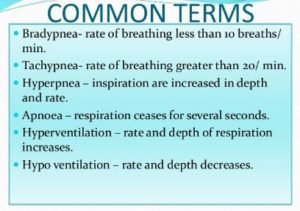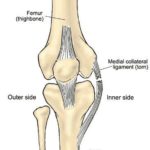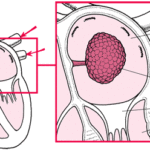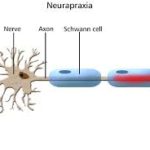Bradypnea Definition
This is a condition characterized by abnormally slow breathing or respiratory rates thus reduced delivery of oxygen to the body’s cells. The respiratory rate is the number of inhalations and exhalations taken by an individual within a minute, and although the normal rate varies depending on various factors, there are some generally recommended numbers of respirations. When an individual’s number of respirations falls below this standard rate, they are said to have bradypnea. [1]

Image 1 – Breathing Patterns Definition
Normal Breathing Vs Bradypnea
Breathing is a crucial body function that ensures the lungs can receive oxygen to be transported by the blood throughout the body and also to remove carbon dioxide from the body as well.

Image 2 – Abnormal Breathing Patterns
This process is so vital to life that it is performed involuntarily, just like a heartbeat, and we don’t even have to think about it. It is only when this process becomes that we actually notice that something is out of place, like when you perform physical activities. [2]
What exactly is Bradypnea?
Breathing Rates
To explain what bradypnea really is, we first have to understand the normal respiratory rates for the average individual. We already mentioned that there are various factors to consider before determining the standard respiratory rate, but one of the most important ones is age, and the average rate is: [3]
- between birth to 1 year – 30 breaths every minute
- between ages 1 and 3 – 25 breaths every minute
- between ages 3 and 12 – 20 breaths every minute
- between ages 12 and 50 – 12 breaths every minute
- above 50 years – 13 breaths every minute
Of course, there are other factors to consider such as overall health, weight, lifestyle decisions like smoking, alcohol, etc. but the average respiratory rate for an adult is between 12 and 20 breaths in a minute, all factors considered. Within this average range, a person is termed as having eupnea, but anything below is bradypnea.
Symptoms of Bradypnea
As we have already mentioned, we barely notice our breathing, so the reduced breathing rate caused by bradypnea is not a recognizable symptom. The reduced respiratory rate, however, means that the body is not getting enough oxygen, and this causes secondary symptoms such as:
- fatigue
- weakness
- chest pain
- dizziness
- near-fainting or actually fainting
- getting tired easily after physical activities
These symptoms are used to narrow down the cause to bradypnea. [4]
What causes Bradypnea?
Drugs
There are very many reasons why the respiratory rate may fall below the recommended rate, but the most common cause is sedation due to drug use.
Alcohol
Another drug that can lead to reduced respiratory rate is alcohol, which causes depression in the respiratory system and lower breathing rates.
Opioids
The drugs could be medicinal or recreational, but as long as they contain opioids, they can lead to bradypnea. Opioids are drugs that are derived from opium, which is extracted from the poppy plant that is grown in temperate clients. [5]
For medicinal purposes, opioids are used to create medications that reduce pain in patients such as morphine and even anesthetics. They are also used to reduce coughing and diarrhea. The same opioids can be used recreationally, although illegally, and they, too, can lead to slowed breathing and bradypnea.
Whether the drugs are obtained illegally or prescribed by a doctor, they can all lead to bradypnea as long as they have got opioids. An example is OxyContin which is prescribed for severe pain, but can be abused by patients.
These opioids lead to reduced breathing because they bind to the opioid receptors in the brain to reduce pain. Opioid receptors are not only found in the brain, but also the spinal cord and digestive tract, and their function is to control pain and pleasure/reward. When the opioids are taken by an individual, they attach to these receptors and block this system, resulting in reduced pain reception.
If a lot of it is taken, the opioids travel to the nervous system and reduce the activity of the cerebral cortex and medulla oblongata. These parts of the brain are responsible for involuntary actions such as breathing and heartbeat – the opioids reduce their functioning and lead to decreased respiratory rates. [6]
Brain related
Other brain-related causes can have a similar effect on the medulla oblongata and cerebral cortex such as damage from a blood clot in the brain, brain tumor or trauma. All these deprive the brain of oxygen and reduce its functioning, also leading to bradypnea.
Hypothyroidism
Another cause of bradypnea is hypothyroidism, which is an endocrine disorder affecting the thyroid glands. The thyroid glands are found around the neck and produce hormones responsible for regulating the rate of metabolism in the body.
Hypothyroidism reduces the functioning of the thyroid glands, causing the body’s metabolism to drop thereby leading to a decreased heart rate. If the heart isn’t pumping enough blood, this leads to a reduced respiratory rate:
Other Causes
Some health conditions can also lead to bradypnea, such as:
- damage to the heart’s tissues due to old age or heart disease
- compromised respiratory system due to smoking or another condition like asthma or cancer
- high blood pressure
- inflammatory diseases like lupus or rheumatic fever
Diagnosis
A doctor is able to determine whether a patient has bradypnea through an analysis of the symptoms during a physical examination. The patient’s medical and family history is also essential in ruling out other related causative factors.
Treatment
Identify Underlying Cause
Once bradypnea is identified, the next step is to determine the underlying cause in order to formulate a treatment plan. As you have seen in the above section, there are very many causes of bradypnea, and unless the underlying cause is cared for, the condition cannot be treated. [7]
Drug Abuse – Rehab
For bradypnea caused by medication, the doctor can easily identify the cause and provide alternative medication. For drug abuse, the patient may be advised to visit a rehabilitation center to avoid bradypnea.
Surgery
In those cases, where the condition is caused by another medical condition like a blood clot or hypothyroidism, surgery may be required to treat bradypnea.
Until the condition is underlying treated, the patient may have to wear a pacemaker which regulates the heart rate and keeps the respiratory rate at the recommended level. [8]
Supplemental Oxygen
In the meantime, if the bradypnea is very serious and causing serious symptoms, the doctor can provide the patient with supplemental oxygen to compensate for the lack of oxygen supply by the lungs.
REFERENCES:
- Bradypnea – Definition, Symptoms, Causes, Treatment Available from: http://www.byebyedoctor.com/bradypnea/
- Bradypnea: Definition, Causes & Symptoms Available from: http://www.study.com/academy/lesson/bradypnea-definition-causes-symptoms.html
- Respiratory Rate Available from: http://www.en.wikipedia.org/wiki/Respiratory_rate
- Symptoms of Bradypnea Available from: http://www.rightdiagnosis.com/b/bradypnea/symptoms.htm
- Common causes of Bradypnea Available from http://www.rightdiagnosis.com/symptoms/bradypnea/common.htm
- Common causes of Bradypnea: Signs & Symptoms And Treatment Available from: http://www.tandurust.com/health-faq-8/bradypnea-causes-symptoms.html
- Bradypnea – Causes, Symptoms, Treatment, Diagnosis Available from: http://www.hubpages.com/health/Bradypnea
- Bradypnea Available from: http://www.diseasepictures.com/bradypnea/







Good Day, Are you or love one suffering with substance abuse?, we can help…For a confidential conversation with one of our professionals, Call Today: (213) 322-1979